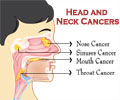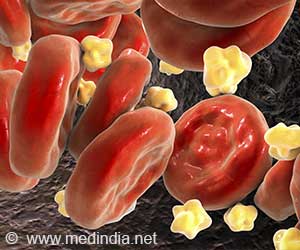Neoadjuvant chemotherapy has been recommended to select patients for treatment they are most likely to respond to.
Highlights
- Laryngeal cancer is a cancer that affects the throat
- Smoking and high alcohol consumption are important risk factors
- The optimal treatment for laryngeal cancer is based on neoadjuvant chemotherapy for select patients
TOP INSIGHT
The best treatment for laryngeal cancer would be one that preserves laryngeal function as well as increases overall survival.
There are still controversies regarding the ideal treatment for advanced laryngeal cancer. Therefore, the research team tried to find out if individualized treatments based on neoadjuvant chemotherapy could improve the outcomes for patients with advanced laryngeal cancer. Their data was based on the patients they had treated over a period of 11 years between 2002 and 2012. Neoadjuvant chemotherapy treatment refers to the chemotherapy treatment administered before the definitive treatment. It helps to reduce the size of cancer and make subsequent treatment easier and more effective. Based on the results of this treatment, further therapeutic course was decided. For example, those who improved were given chemo-radiation so that their larynx could be preserved, while those who did not undergo laryngectomy.
Among the patients with stage 3 and stage 4 laryngeal cancer:
- 71 out of the 153 patients received neoadjuvant chemotherapy with cisplatin and fluorouracil or carboplatin. The remaining patients directly opted for surgery or chemo-radiation
- If the patients had a partial response to neoadjuvant chemotherapy, that is, more than 50% reduction in the size of the tumor, they were administered definitive chemo-radiotherapy
- If they did not respond based on the size of the tumor on endoscopy and CT/MRI images, they underwent total laryngectomy followed by radiation
- The patients were followed up weekly for a period of 48 months
- Following neoadjuvant treatment, 22% patients received chemo-radiotherapy while the remaining required laryngectomy
- Primary surgery and selection of patients based on neoadjuvant treatment improved overall survival (OS) and disease-specific survival (DSS) as compared to the use of primary chemo-radiotherapy
- The 5-year disease – specific survival (DSS) for advanced laryngeal cancer with neoadjuvant treatment was around 80%. It was much better than in those who underwent primary chemo-radiotherapy (66%)
- Those who underwent primary chemo-radiotherapy had the highest rate of preservation of the larynx. It must however be remembered that chemo-radiotherapy may affect the function of the larynx over a longer duration and could result in symptoms of difficulty with swallowing and chronic aspiration.
- Patients who underwent primary laryngectomy and salvage laryngectomy did well, and better than those who underwent definitive chemo-radiotherapy therefore reiterating the important role of surgery in the treatment of advanced laryngeal cancer
- Most patients experienced mild adverse effects during treatment with the neoadjuvant chemotherapy. One patient however, suffered from liver failure.
References:
- Wolf G et al. Survival Rates Using Individualized Bioselection Treatment Methods in Patients With Advanced Laryngeal Cancer. JAMA Otolaryngol Head Neck Surg. doi:10.1001/jamaoto.2016.3669
- Laryngeal Cancer Treatment (PDQ®)–Patient Version - (https://www.cancer.gov/types/head-and-neck/patient/laryngeal-treatment-pdq)
 MEDINDIA
MEDINDIA




 Email
Email










